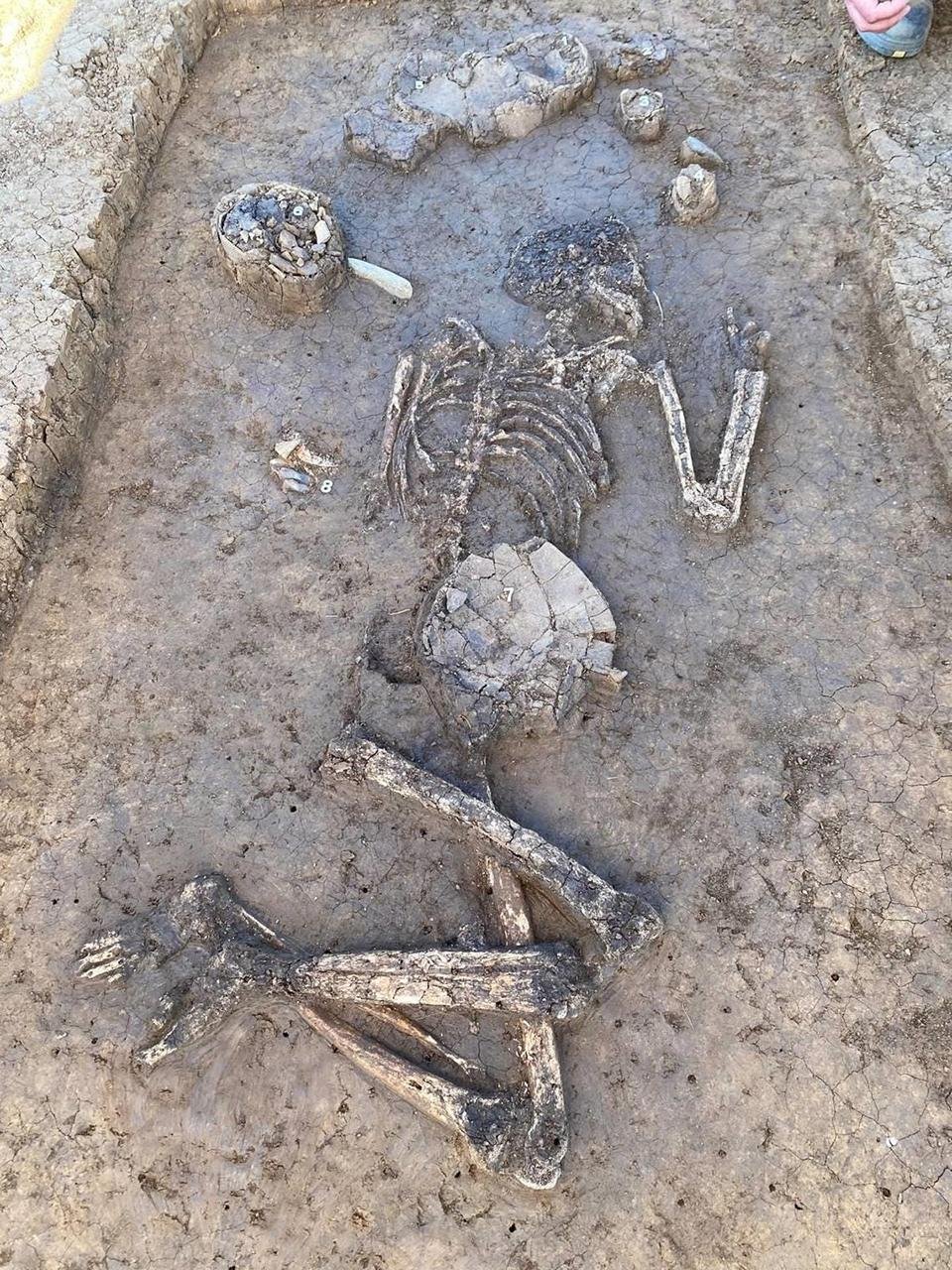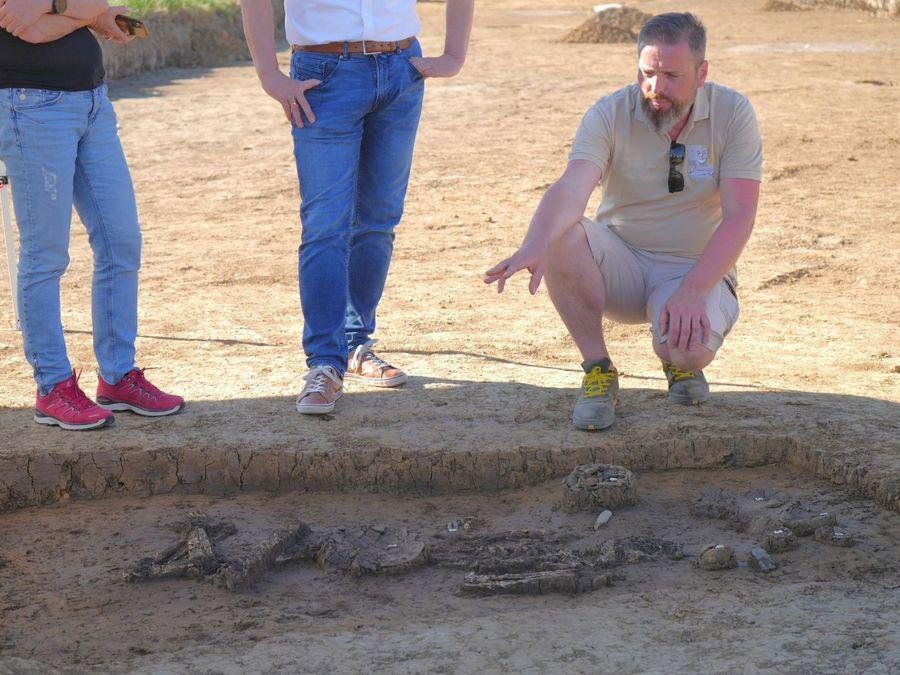Archaeologists in Eichendorf, Germany, have unearthed a 6,800-year-old skeleton accompanied by an array of grave goods, suggesting that the individual was a prominent figure in their community.
 A 6,800-year-old skeleton from the neolithic era was discovered in Germany. Credit: Dingolfing-Landau District
A 6,800-year-old skeleton from the neolithic era was discovered in Germany. Credit: Dingolfing-Landau District
The skeleton, now referred to as the “Exinger,” was found in the district of Exing, a part of the town of Eichendorf, during routine archaeological checks prior to a construction project.
The finding was announced by district archaeologist Florian Eibl. The excavation, which began in mid-April 2024, revealed a grave filled with pottery, stone tools, and a distinctive boar’s tooth halved and used as decoration for a small bag. This bag likely contained flint and pyrite used for making fire, underscoring the individual’s high status and possibly his role as a village leader or a chieftain, a figure akin to a modern-day mayor.
The grave goods included a personal drinking vessel placed in front of the skeleton’s face, several stone blades positioned around the body, and a bowl of graphite, which was used as a dye during burial rites. The presence of these items suggests the deceased was a person of considerable importance and respect within the Neolithic society.
 Dingolfing-Landau district archaeologist Florian Eibl beside the skeleton. Credit: Dingolfing-Landau District
Dingolfing-Landau district archaeologist Florian Eibl beside the skeleton. Credit: Dingolfing-Landau District
Eibl explained to German outlet Der Spiegel that the split boar’s tooth symbolized status due to the peril involved in hunting wild boars with rudimentary weapons of the time. The inclusion of these items, along with a large amount of pottery—about four times the usual quanтιтy found in graves from this period—indicates that the individual had achieved their status through personal accomplishments rather than inheritance.
Anthropologist Chiara Girotto, who examined the remains, estimated that the man was approximately 1.70 meters tall, an unusually tall stature for that era. Despite the good preservation of the skeleton, determining the exact age at death has been challenging due to its fragile condition. However, the grave goods imply that the man was middle-aged, as such status was typically earned through years of experience and leadership.
The body was buried in a crouching position, a form of burial that was uncommon for the period, making this discovery even more exceptional. The vessels placed around the head, though yet to be thoroughly analyzed, may still contain traces of their original contents.
 The site also yielded gold jewelry artifacts. Credit: Dingolfing-Landau District
The site also yielded gold jewelry artifacts. Credit: Dingolfing-Landau District
The area around Eichendorf, particularly the village of Exing, has been a focal point for archaeological interest due to its rich history of human settlement. Florian Eibl noted that the region has been significant since the Neolithic period, with settlements active from around 10,000 years ago until 2,000 BCE. The discovery of the Exinger adds a valuable piece to the puzzle of understanding early European societies.
The rich archaeological findings in Exing, including gold jewelry from various periods, suggest that the area was an important cultural and economic center throughout the Neolithic, Copper, and Bronze Ages. Eibl emphasized that the Neolithic period was a time of significant societal development.
This grave is considered one of the best-preserved Neolithic sites in Lower Bavaria, with only ten other sets of remains discovered among 28 burial sites in the region. Further analysis of the skeleton and the grave goods will continue, with researchers employing pH๏τogrammetry to create a detailed 3D model of the burial site. This technique, which involves sтιтching together multiple digital images, will help archaeologists and historians better understand the burial practices and daily life of the Neolithic people in this region.
The Exinger’s grave, being approximately 1,500 years older than the famous Ötzi the Iceman, provides a new point of reference for studying early European human history.





